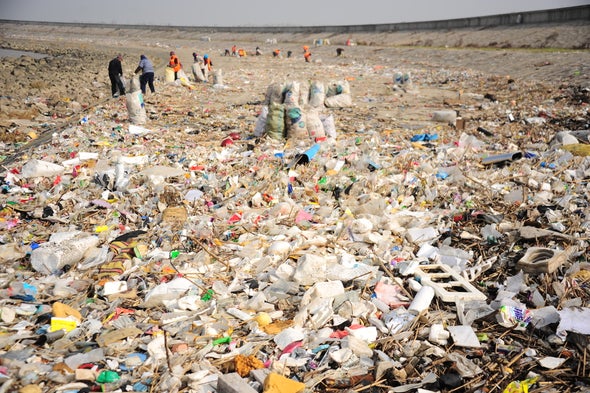Plastic Fantastic: plastic pollution as a source for good

“Rivers carry trash over long distances and connect nearly all land surfaces with the oceans,” making them a major battleground in the fight against sea pollution, explains Christian Schmidt, a hydrogeologist at the Helmholtz Center for Environmental Research in Leipzig, Germany.
Patel, Prachi. “Stemming the Plastic Tide: 10 Rivers Contribute Most of the Plastic in the Oceans.” Scientific American, 1 Feb. 2018, www.scientificamerican.com/article/stemming-the-plastic-tide-10-rivers-contribute-most-of-the-plastic-in-the-oceans/. Accessed 15 Aug. 2019
93% of the world’s plastic waste comes from just 10 of the world’s rivers. Each of these rivers are located in areas of extreme poverty which lack adequate infrastructure for waste disposal or recycling.
Faced with this crisis one solution, created by David Kalz and Shaun Frankson in 2013, is The Plastic Bank.
The core of this idea is to create a bank where people could redeem collected plastic waste for credit which could be used for purchasing goods and medical services, and help people create a sustainable income. People can also draw on credit to buy fuel, cook stoves and some schools accept plastic towards tuition.
After collection the plastic goes to a recycling centre and the material is then sold at a premium over the commodity price
The Social Plastic
The plastic which gets deposited in the Plastic Bank becomes part of the Social Plastic Programme. This is a way for individuals and major companies alike to help fund The Plastic Bank and help consumers and companies make a move towards recycled plastic.
We are turning plastic into gold by revolutionizing the world’s recycling systems to create a regenerative, inclusive, and circular plastic economy
Companies like Henkel and Marks and Spencers have teamed up with the Social Plastic Ecosystem and are using recycled Social Plastic and supporting the development of Plastic Banks around the world.
A zero waste and zero plastic solution is of course the end goal, however plastic is here, now in the rivers and canals and instead of attempting to eliminate plastic after it has reached the ocean one solution is to stop it making its way to the ocean in the first place.
Plastic Bank are also using blockchain technology and mobile banking aided by IBM banking to help individuals secure their income and grow investments to possible secure access to future finance. This technology also helps record how much and individual has collected and creates a digital wallet for individuals often who will not qualify for a regular bank account.
The Plastic Bank users can also use credit to buy smartphones and charge smartphones at solar powered charging points in stores. The Plastic Bank also has a “plastic offset program” in order for corporations to offset plastic bought from other sources and contribute to The Plastic Bank.
The next plan for The Plastic Bank is to add a 3D printer program whereby components, tools or spare parts which may be needed in the community can be created out of plastic collected by the community